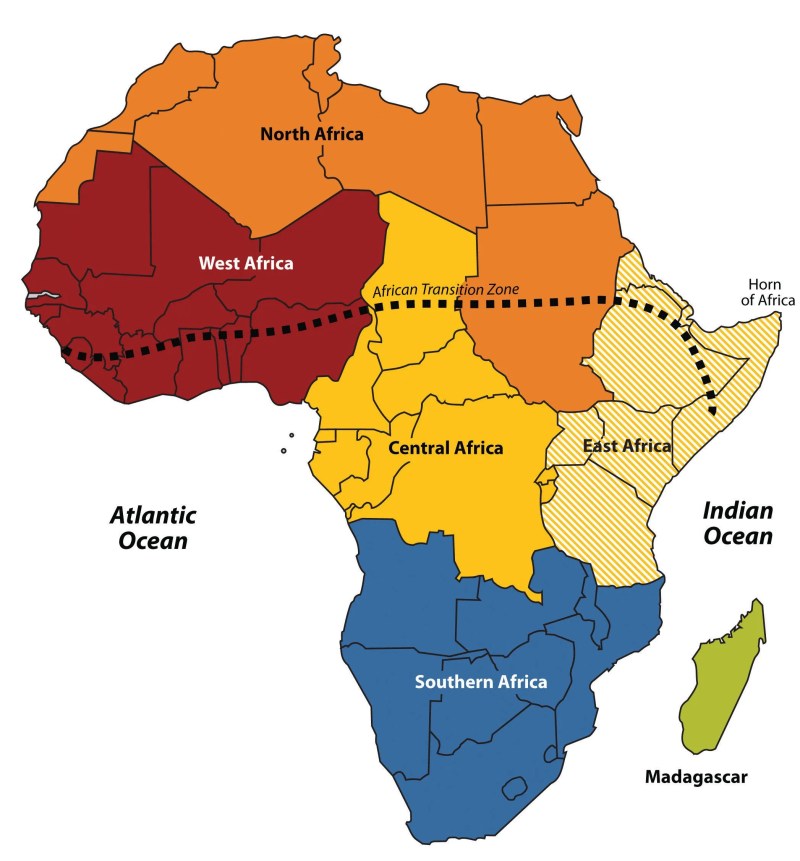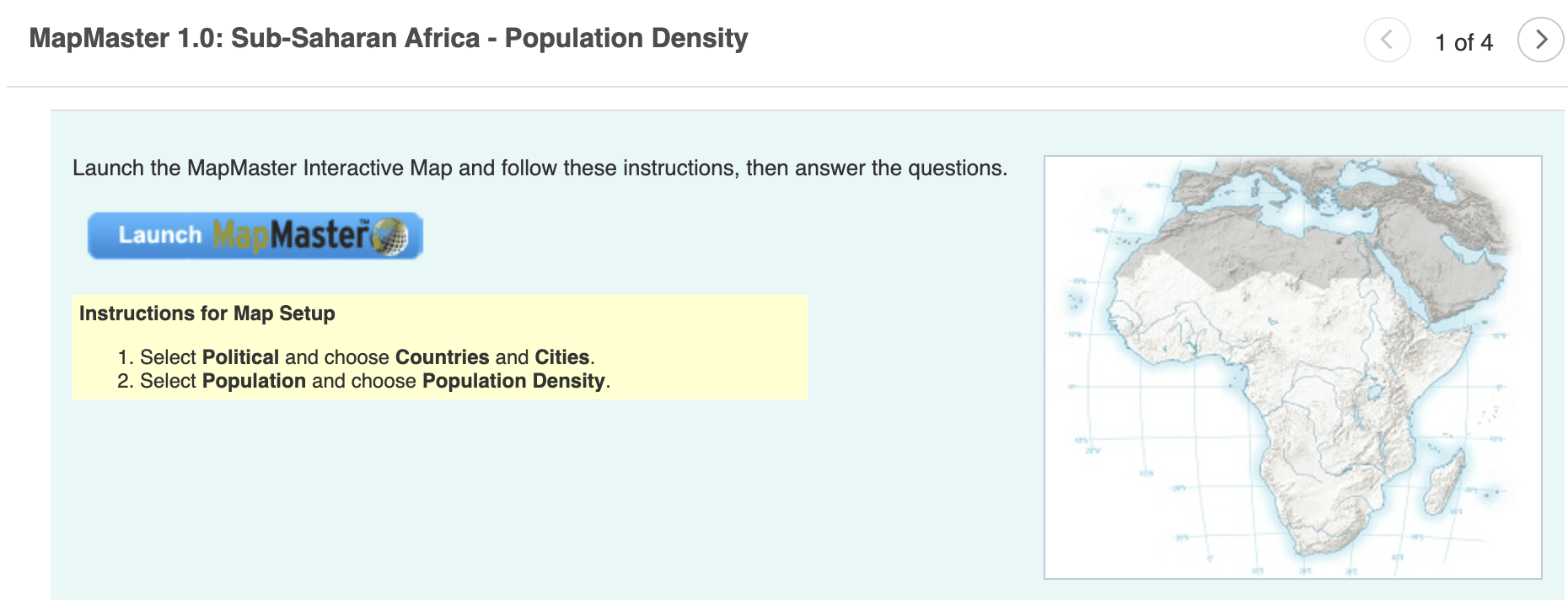
Sub Saharan Africa Political Map – Growth in sub-Saharan Africa is expected to rise to 2.9 percent in 2020, the World Bank said on Tuesday, January 14 in its report.
Per year. The bank cited improved investor confidence in other major economies, the easing of energy restrictions and a rise in oil production that led oil exporters to recover. Strong growth among the region’s agricultural traders was also said to take a lot of credit for the growth. This is a negative forecast that could represent slower demand from major trading partners, lower commodity prices and worse domestic developments in several countries than previously expected.
Sub Saharan Africa Political Map

Growth is expected to rise to 0.9 percent in South Africa. Growth is likely to rise to 2.1 percent in Nigeria while Angola is expected to accelerate to 1.5 percent. Kenya’s growth appears to be up to 6 percent. “Growth is expected to be stable at 6.4 percent in the West African Monetary Union,” said the World Bank.
Map Of Africa Free Templates
Competition in the property market in sub-Saharan Africa has been low compared to the rest of the world. Country-level data show that in terms of the distribution of global competitiveness ratings, more than 70 percent of countries in the region are below average. The hard numbers, measured directly using hard data, confirm the overall ranking results and show that the scores in sub-Saharan African countries are higher on average than in other developing economies, especially in the service sector. A study of the price levels of goods and services compared internationally shows that at the same level of development, prices in this region are higher than in other regions, which can be attributed at least to the low competition of product market. Expert reviews show that increased competition will help promote economic growth and prosperity by increasing productivity and profitability of goods sold without lower prices for consumers. Such findings are supported by evidence at the firm level, which shows that market structure influences business processes and outcomes and ultimately shapes macroeconomic outcomes. In particular, the decrease in markups is closely related to the rise of the company’s productivity, imports, productivity growth and labor productivity. In the manufacturing sector, these effects are more visible in relation to services and appear to be greater in local companies than in foreign companies. Thus highlighting the need to increase competition in the food market in sub-Saharan Africa. Although product market reforms were implemented in several countries in the region in the late 1990s and early 2000s, which helped to promote competition and bring about profitable growth, the pace of Development has stopped in recent years. However, due to a near tripling in the number of countries that have implemented competition laws since 2000, domestic progress remains limited. Because several factors affect competitiveness, an integrated approach that includes the following key factors is needed to increase competitiveness in this area:
• Consumer market reforms that remove administrative and regulatory barriers to private sector participation in product and service markets and increase business capacity.
• A sound competition policy framework including an approved competition law and an independent, adequately funded and staffed agency.
• Additional policies on trade and foreign direct investment to strengthen foreign competition and improve access to inputs.
Defining Sub Saharan Africa And The Countries In It
• Carefully designed financial and material strategies that do not restrict competition by supporting only a few players in the market.
Although these strategies are individually appropriate, they seem to reinforce each other. Free trade and investment, for example, help to increase competition, but a strong competition policy framework is needed to ensure that the benefits of external competition are realized and that a few large firms do not monopolize markets through commercial means. unfair. Likewise, development policies that aim to develop selected sectors that are considered important for increasing productivity and growth should not give way to a decrease in competition and an increase in corporate market power can impose costs on the entire economy and process. with possible consequences. of previous policies. Broadly, countries need to maintain a strong and stable macroeconomic and financial environment to attract private investment and ensure that pro-competitive policies are implemented. Furthermore, cooperation between national competition authorities needs to be improved in the current context of growing regional trade and consolidation in order to deal with any anti-competitive activities carried out by large companies. of regions, as reported by the International Monetary Fund.
This website uses cookies to improve your experience. We’ll assume you’re fine with this, but you can opt out if you like. ACCEPTANCE SETTINGS

This website uses cookies to improve your experience while browsing the website. Among these cookies, the cookies listed as necessary are stored on your browser as they are necessary for the operation of the main parts of the website. We also use third-party cookies that help us analyze and understand how you use this website. These cookies will only be stored on your browser with your consent. You also have the option to opt out of these cookies. But opting out of some of these cookies may affect your browsing experience.
Sub Saharan Africa Political Map Diagram
Essential cookies are necessary for the website to function properly. This category includes cookies that ensure the functionality and security of the website. These cookies do not store your information.
Any cookies that may not be necessary for the website to function and are used specifically to collect your user data through analytics, ads, other content they are called non-essential cookies. You must obtain user consent before using these cookies on your website. Therefore, it includes a large number of African countries. It also includes many countries and peoples of the continent. Sub-Saharan Africa has many geographic features, including the Sahel, savannas, dry grasslands, and tropical forests. It also includes the continent’s longest rivers and largest lakes. Sub-Saharan Africa is divided into 4 regions, according to the United Nations Geoscheme. Each of these regions consists of several countries with many different ethnic and linguistic groups.
West Africa is made up of 16 countries. The northern part of the region includes the Sahel region, which is a section of dry land that separates the Sahara Desert in the north from the savannah in the south. Half of the West African countries are in the Sahel, while the other half is in the savannah, near the Atlantic Ocean. Some West African countries, including Nigeria, Togo, Ghana, Cote D’Ivoire (Ivory Coast), Liberia, Sierra Leone and Guinea, are home to tropical forests. West Africa is also where the Niger River, the third longest river in Africa, flows. It starts in Sierra Leone, passes through the countries of Guinea, Mali, Niger and Nigeria, and heads south to the Niger River, where it flows into the Atlantic Ocean.
Central Africa covers the central part of the African continent. This environment has 9 countries, of which the Democratic Republic of the Congo (DRC) is the largest, and the island nation of Sao Tome and Principe is the smallest. Central Africa has the largest area of tropical forest on the continent. The rainforest covers the northern half of the DRC, as well as large parts of the Republic of Congo, Gabon, Equatorial Guinea, and a small part of the Central African Republic.
Climate Change Impacts For Agriculture In Africa
Central Africa is where the Congo River, the second longest river in all of Africa, is found. The river begins near the border between the DRC and the East African country of Zambia. From there, it flows north, through the DRC, and then descends to form the border between the DRC and the Republic of Congo. It finally flows into the Atlantic Ocean at the border between DRC and Angola. Central African countries also share some of Africa’s Great Lakes with East African countries, including Lake Albert, Lake Edward, Lake Kivu, Lake Tanganyika and Lake Mweru.
East Africa has 18 countries. The Horn of Africa, which includes the countries of Eritrea, Ethiopia and Djibouti is the northeastern part of the region. To the north of it is the Gulf of Aden, beyond it is the Arab country of Yemen, on the Arabian Peninsula. Both Eritrea and Djibouti are close to the Strait of Bab al-Mandab, a narrow waterway that connects the Red Sea to the north and the Gulf of Aden to the south. Most of Eritrea’s coastline borders the Red Sea. Some East African coastal countries face the Indian Ocean.
The African part of the Great Rift Valley, which is the largest rift in the world, flows mainly in East Africa. It extends from Djibouti, through Ethiopia, Kenya, and Tanzania, to the north of Mozambique. East Africa also includes the African Great Lakes, Lake Victoria, as well as the Great Lakes, including Lake Turkana, Lake Kyoga,

Sub saharan africa food, malaria sub saharan africa, sub saharan africa health, sub saharan africa statistics, sub saharan africa poverty, sub saharan africa news, sub-saharan africa, sub saharan africa diseases, sub saharan africa population, sub saharan africa hiv, political map of sub saharan africa, sub saharan africa education